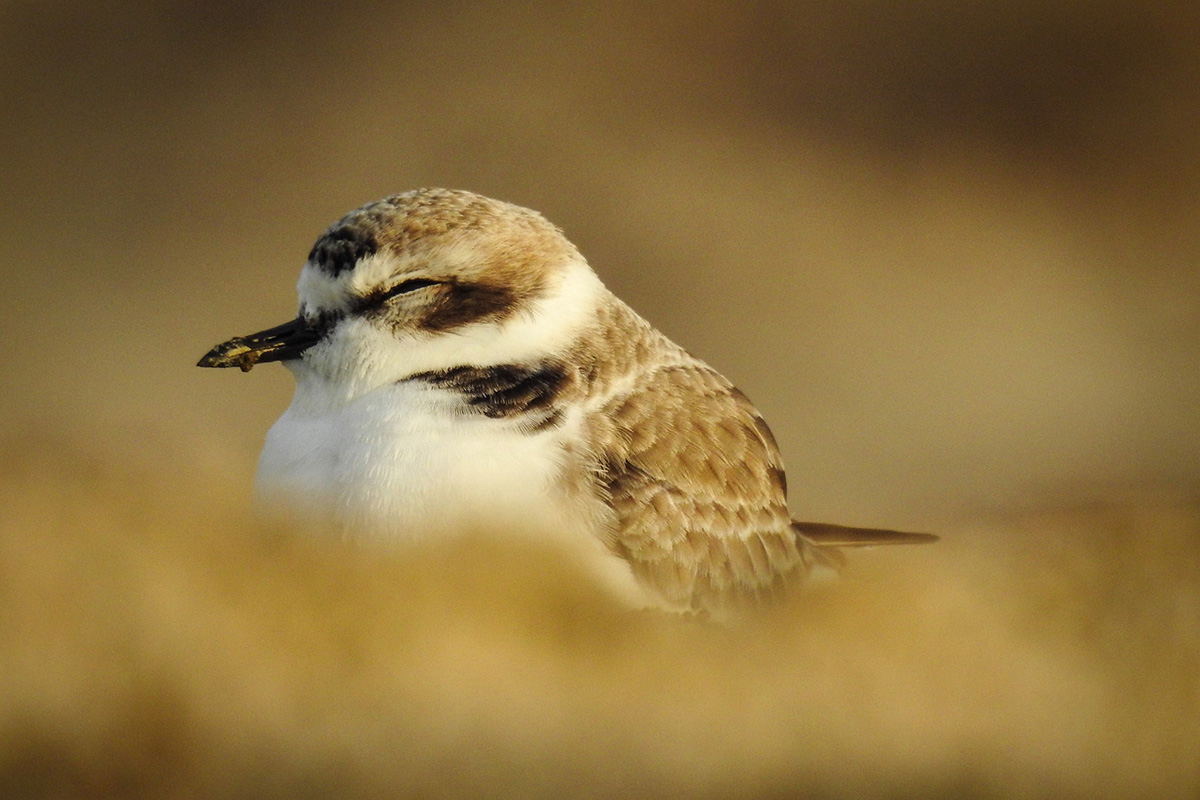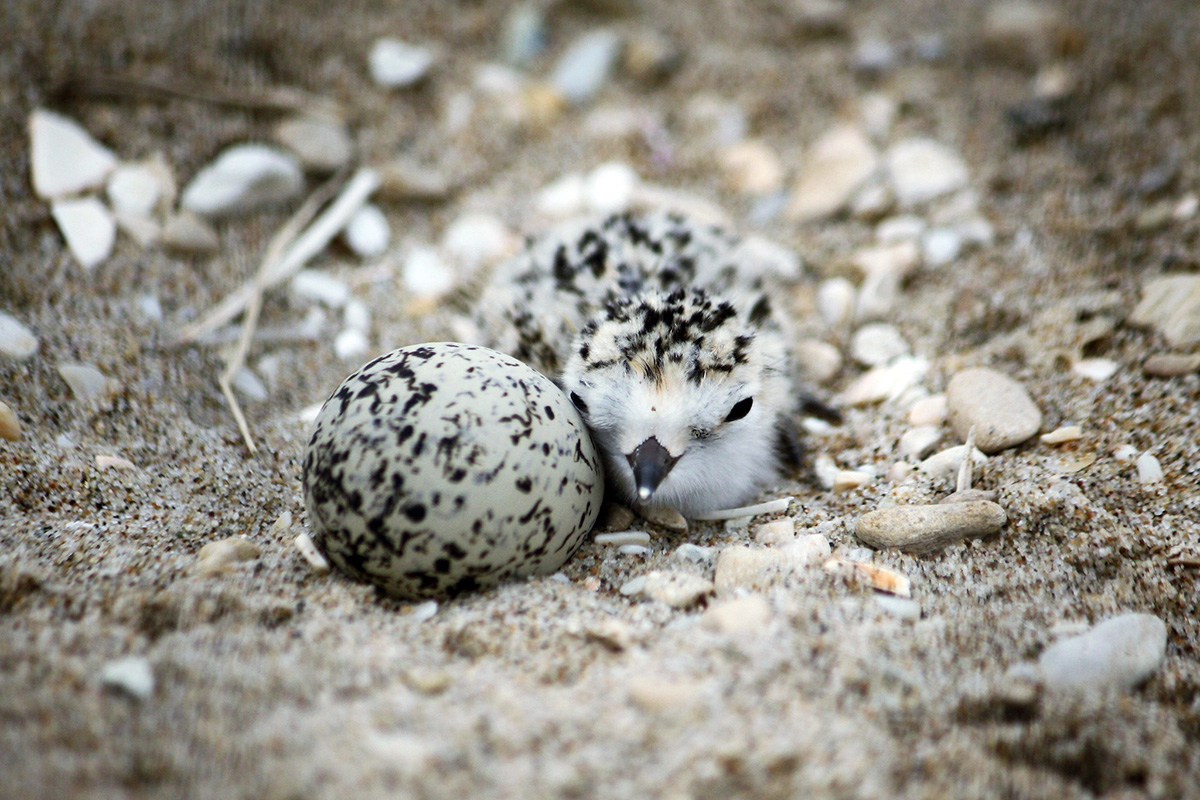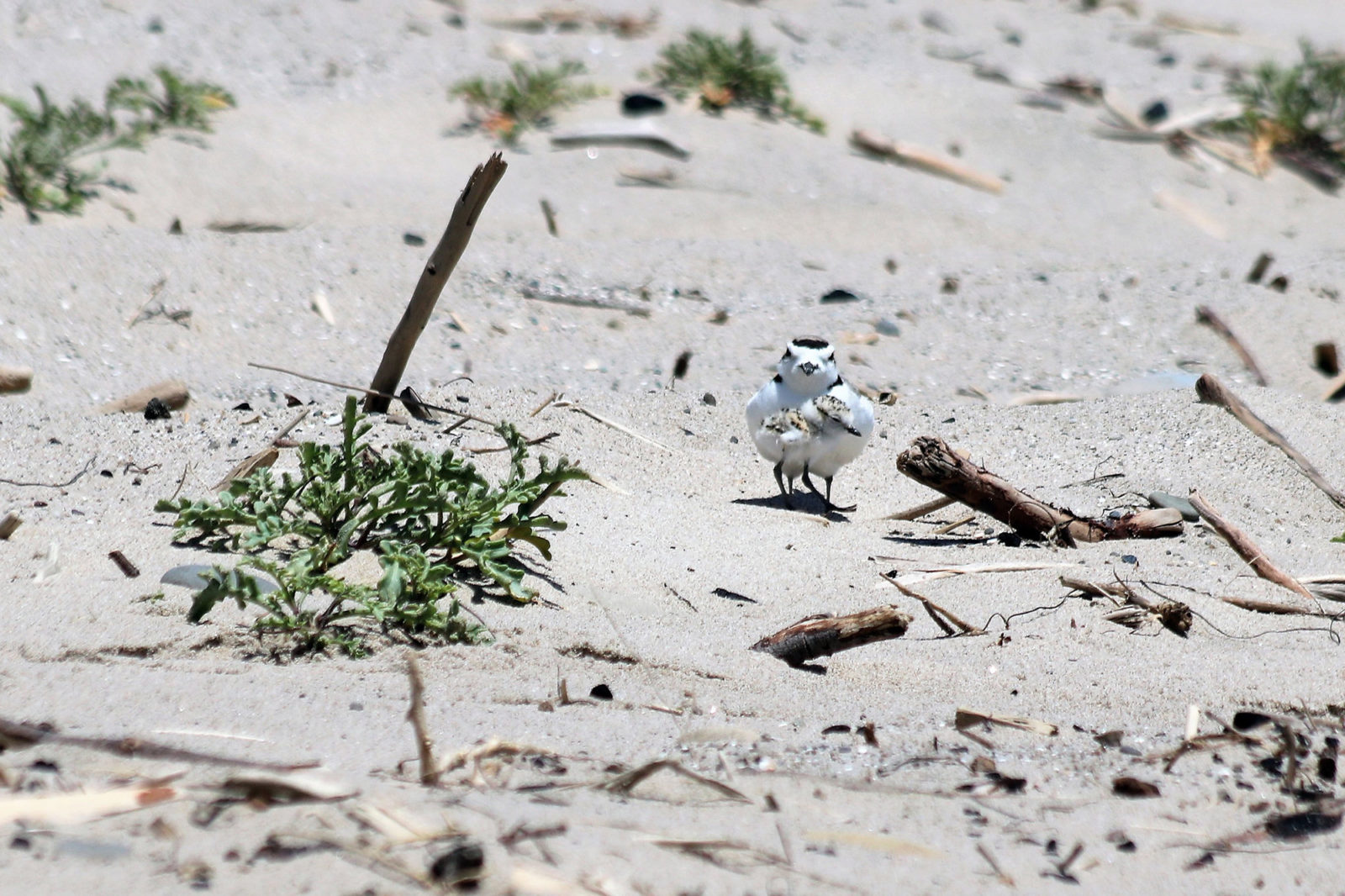As people paused their activity due to pandemic lockdowns this spring and summer, threatened snowy plovers spread out across the beaches of California.
Snowy plovers are small white and gray shorebirds. They spend their lives on the coastline of the Pacific, ranging from Baja, Mexico to Washington, living and nesting on open beaches. For the last few decades the snowy plover population has declined, mostly due to habitat loss by human encroachment and environmental degradation. With fewer people heading out to the coast due to the pandemic, it has meant snowy plovers are able to nest on long-lost beaches.
In most areas where plovers nest, teams of biologists put up what they call symbolic fencing. Matt Lau, a biologist with the National Parks Service, showed me in July one such fence he built this spring on North Beach in the Point Reyes National Seashore. This fence, short white sticks lined with long white or yellow plastic cables, acts as a barrier to deter any humans walking on the nests. This usually works well for the plovers who often return to the areas where they were born. This season has been different.
“Plovers have been pretty much all over the park,” Lau said.
Lau told me he found three snowy plover nests at South Beach, the first known nests spotted there since the 1980s, almost a decade before the snowy plover was listed as threatened under the Endangered Species Act.
In a report by Point Reyes National Seashore released on snowy plovers, park biologists saw a 39 percent increase in breeding birds in the park compared to last year.

The success isn’t confined to Point Reyes. Snowy plovers have been found nesting in greater numbers at state beaches in Oceano Dunes, Silver Strand, Bolsa Chica, Huntington Beach, and Carpinteria, according to California State Parks and the U.S. Fish & Wildlife Service. Both Bolsa Chica and Huntington State Beaches saw a tenfold increase in nests, and Carpinteria State Beach saw its first nest in over 60 years, according to Heather White, a senior environmental scientist at California State Parks.
The “anthropause,” as one paper in Nature put it, even seems to have encouraged plovers to branch out beyond beaches. Biologists found five nests just outside a parking lot at Sunset State Beach on Monterey Bay, said Carleton Eyster, a snowy plover biologist at Point Blue Conservation Science.
“State Parks closed many beaches and that’s when the birds started settling in,” Eyster said.
Though snowy plovers do nest on Sunset State Beach, they usually do so closer to the coast, far away from humans and within the symbolic fencing. Following the recommendation of plover biologists like Eyster, State Parks kept the Sunset Beach parking lot closed until the end of July, when the birds moved further out onto the beach.
“The closure of the beaches allowed the birds to reoccupy habitat that they previously used before we got here,” Eyster said.
Following the closure of Oceano Dunes State Park in San Luis Obispo County, 15 snowy plovers were spotted nesting in the wide-ranging dunes that, in the spring and summer, are a popular place for off-road vehicles. The park remains closed to off-road vehicles indefinitely, according to California State Parks.
Even on Huntington State Beach, one of the most frequented beaches in California, biologists found 12 nests this year compared to four last year. Before 2018, snowy plovers had not been sighted at Huntington Beach for more than 50 years. That’s in part because people and plovers have a tough time coexisting. Even this year, plover nests have been discovered vandalized, with protective cages over the birds’ nests removed and eggs smashed, according to a June article in the Orange County Register. It’s a reminder, biologists said, of the many threats still facing the birds.
“There are so many things working against them,” said Jessica Nielsen, a biologist at the University of California Natural Reserve System’s Coal Oil Point Preserve in Santa Barbara.

At Coal Oil Point last year Nielsen found 32 nests eaten by crows, the first such predation she’d documented in the last 8 years. Skunks also prey on snowy plovers, but only consume on average six nests a season at Coal Oil Point, making crows the new dominant predator last year. Nielsen said that crows ate seven nests this year, but the plovers suffered even more from high tides and unusually strong winds. Climate change and rising sea levels are robbing the birds of space they need, Nielsen said.
“The water comes so much higher on the beach than it normally would, and so we’ve noticed that the last couple of years a lot of nests get washed out by the tide,” she said.
Invasive species such as European beachgrass and iceplants also drastically alter the natural dune habitats of California and contribute to beach habitat loss.
Eyster said that before European beachgrass was introduced in California, the dunes were far reaching and moved in and out with the winds and the tides, leaving vast swathes of open beach for plovers and many other native species, such as least terns, to nest out in the open where they can easily spot predators approaching. The long root systems of the beachgrass hold the dunes in place, causing steeper dunes, shrinking the safe nesting place between the tide and the dunes and giving predators perches closer to the nests.
Research and protections, though, have helped plover populations increase steadily. According to USFWS data, their numbers have increased across their entire Pacific range from 1,817 in 2005 to 2,217 in 2019.
Eyster said the plover expansion this year is a reminder of how much snowy plover conservation is about finding a balance between people and plovers using beaches along the California coast.
“Is it a people beach or is it a natural beach? And the answer is it’s both,” Eyster said. “They live on a beach that we all like to enjoy. It’s the juggling act. That’s the reality.”
At Point Reyes, Matt Lau said he hopes beachgoers can give the birds space.
“It’s so important that people who come to the beach learn about the plovers,” he said.





